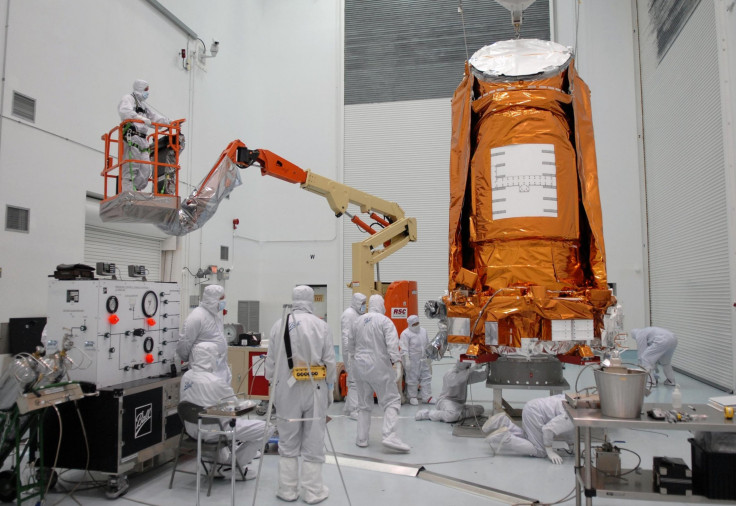Kepler Is Not Dead: Planet-Hunting Likely Over But Two-Wheel Mission Could Be On The Cards

NASA’s Kepler spacecraft may not have recovered from the malfunction it has been suffering from for the past year, but scientists have not lost hope, and are looking for ways to enable the spacecraft for new research from its current position.
Kepler, which is in a heliocentric orbit currently about 0.5 AU (1 AU = 149 597 871 kilometers) from Earth, tilted unexpectedly on May 12 and entered the safe mode. After examining the spacecraft, scientists said that one of its four gyroscope-like reaction wheels, which are used to precisely point the spacecraft in any direction, had failed.
On Aug. 8, engineers conducted a system-level performance test to determine that the second wheel, which failed last year, can no longer provide the precision-pointing necessary for Kepler to collect further data. This was the second wheel that Kepler lost after the first wheel failed in July 2012.
After Kepler completed its primary mission in November 2012, the Kepler Space Telescope team extended the mission for four more years.
The latest malfunction has turned out to be a major obstacle for the scientists in charge of the program as Kepler needs at least three functioning wheels to continue its search for Earth-sized exoplanets -- the planets outside our solar system that orbit stars like our sun in a habitable zone.
And now that two of Kepler’s gyroscopic reaction wheels are no longer functioning, scientists are planning to conduct an engineering study to determine whether the space telescope can be used to conduct a different type of science program, which may also include an exoplanet search, with the help of the remaining two wheels.
“Kepler has made extraordinary discoveries in finding exoplanets including several super-Earths in the habitable zone,” John Grunsfeld, associate administrator for NASA's Science Mission Directorate in Washington, said in a statement.
Since its launch in 2009, Kepler has confirmed 135 exoplanets and identified over 3,500 candidates during its mission.
“Knowing that Kepler has successfully collected all the data from its prime mission, I am confident that more amazing discoveries are on the horizon,” Grunsfeld said.
Ball Aerospace & Technologies Corp., an American manufacturer of spacecrafts that developed and built Kepler, has performed a preliminary study of the possible pointing performance of Kepler using two reaction wheels and thrusters.
According to scientists, Kepler can be controlled using two reaction wheels with high accuracy. However, this accuracy does not provide the performance of the original three or four-wheel control system, but it may still be sufficient for the craft to perform other tasks.
“Though the spacecraft will no longer operate with its unparalleled precision pointing, scientists expect Kepler’s most interesting discoveries are still to come,” a NASA statement said.
© Copyright IBTimes 2025. All rights reserved.






















